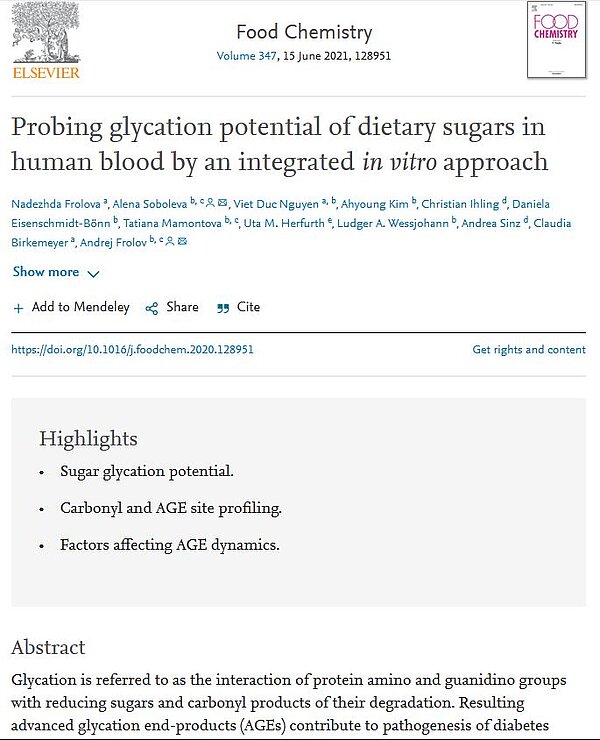Analysis of glycated blood.
IPB scientists, together with partners from Russia and Halle University, have studied the glycation potential of dietary sugars in human blood. Glycation is the spontaneous, non-enzymatic reaction of proteins, lipids and nucleic acids with reducing sugars and the carbonyl products of their degradation. The resulting reaction products are called advanced glycation endproducts (AGEs). AGEs are formed exogenously during the cooking process of proteins with carbohydrates or endogenously in the blood circulation, where upon their intestinal absorption mainly fructose and galactose react with blood proteins. The accumulation of AGEs with lifetime contributes to the pathogenesis of diabetes and neurodegenerative diseases.
Although the differences in glycation potential of various monosaccharides are well characterized, the underlying mechanisms of endogenous glycation are poorly understood. To address this question, the Halle scientists incubated human serum albumin with several monosaccharides and analyzed the dicarbonyl intermediates of their degradation. In parallel they determined the albumin glycation patterns. For this purpose, they established a mass spectrometry-based methodological platform in which they combined for the first time all necessary techniques for parallel dicarbonyl, carbohydrate and proteomics analysis. As a result, they localized 23 different glycation sites in the serum protein, whose reactivity was sugar-specific and influenced by the concentration of dicarbonyls formed, and by the presence of stabilizing residues in close proximity to the glycation sites.
AGEs are used in food industry as colorants and flavor enhancers. While it was originally assumed that these additives were harmless, more recent studies indicate a strong involvement of AGEs in the pathogenesis of civilization diseases. The Halle study may help in better assessing the glycation potential of dietary sugars and their metabolic behavior in the organism. This knowledge could lead to an appropriate labeling of commercial foods with regard to their glycation effect.
Originalpublikation:
Nadezhda Frolova, Alena Soboleva, Viet Duc Nguyen, Ahyoung Kim, Christian Ihling, Daniela Eisenschmidt-Bönn, Tatiana Mamontova, Uta M. Herfurth, Ludger A. Wessjohann, Andrea Sinz, Claudia Birkemeyer, Andrej Frolov. Probing glycation potential of dietary sugars in human blood by an integrated in vitro approach. Food Chemistry 347 (2021)



